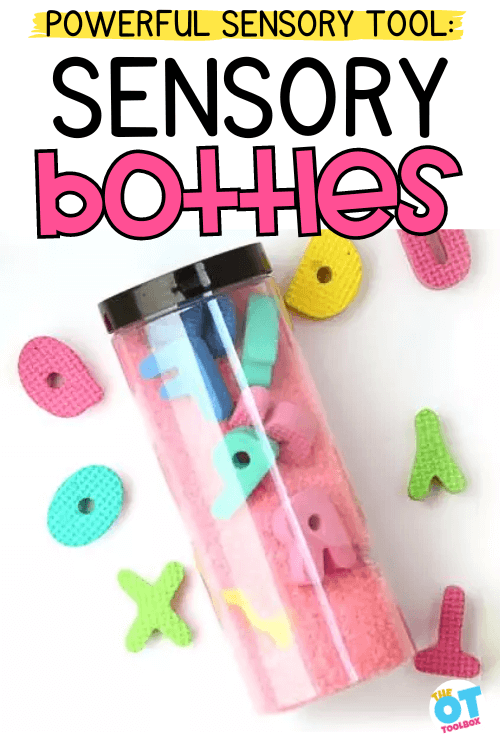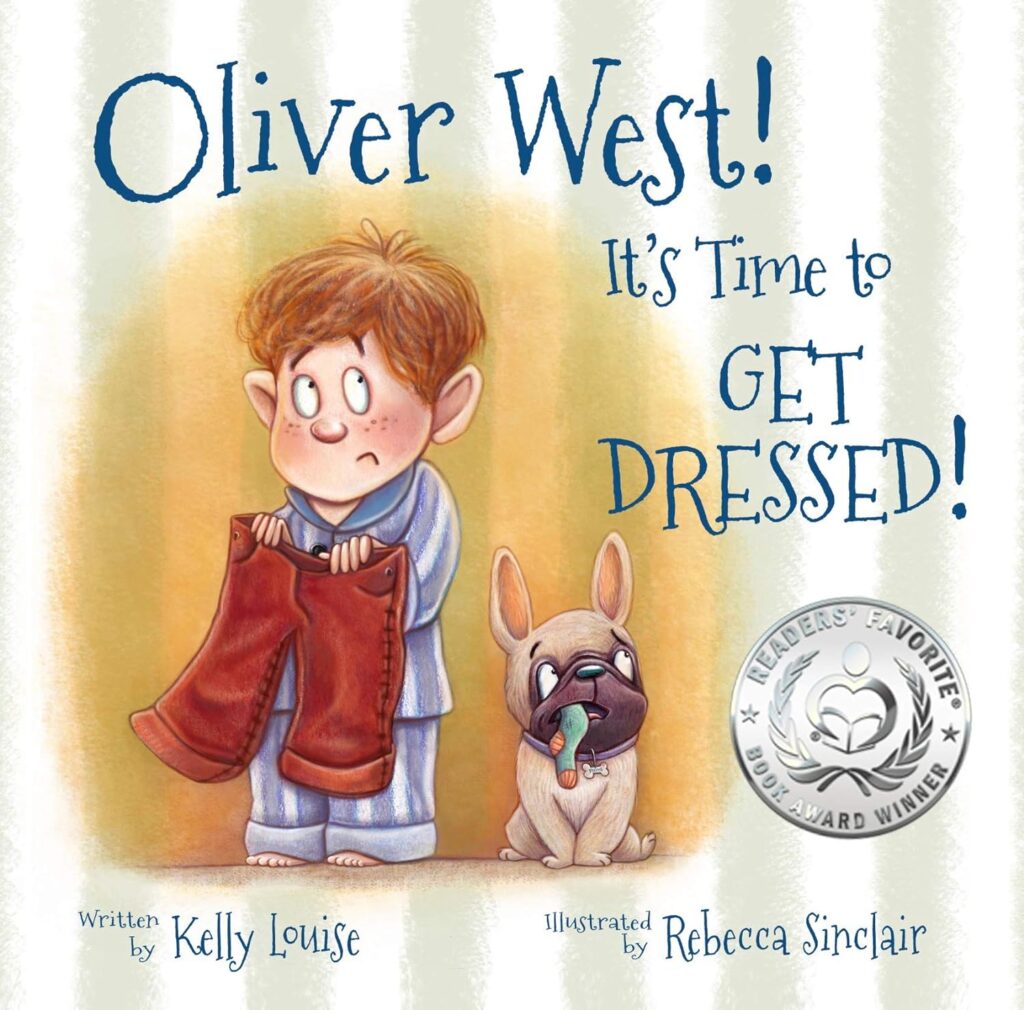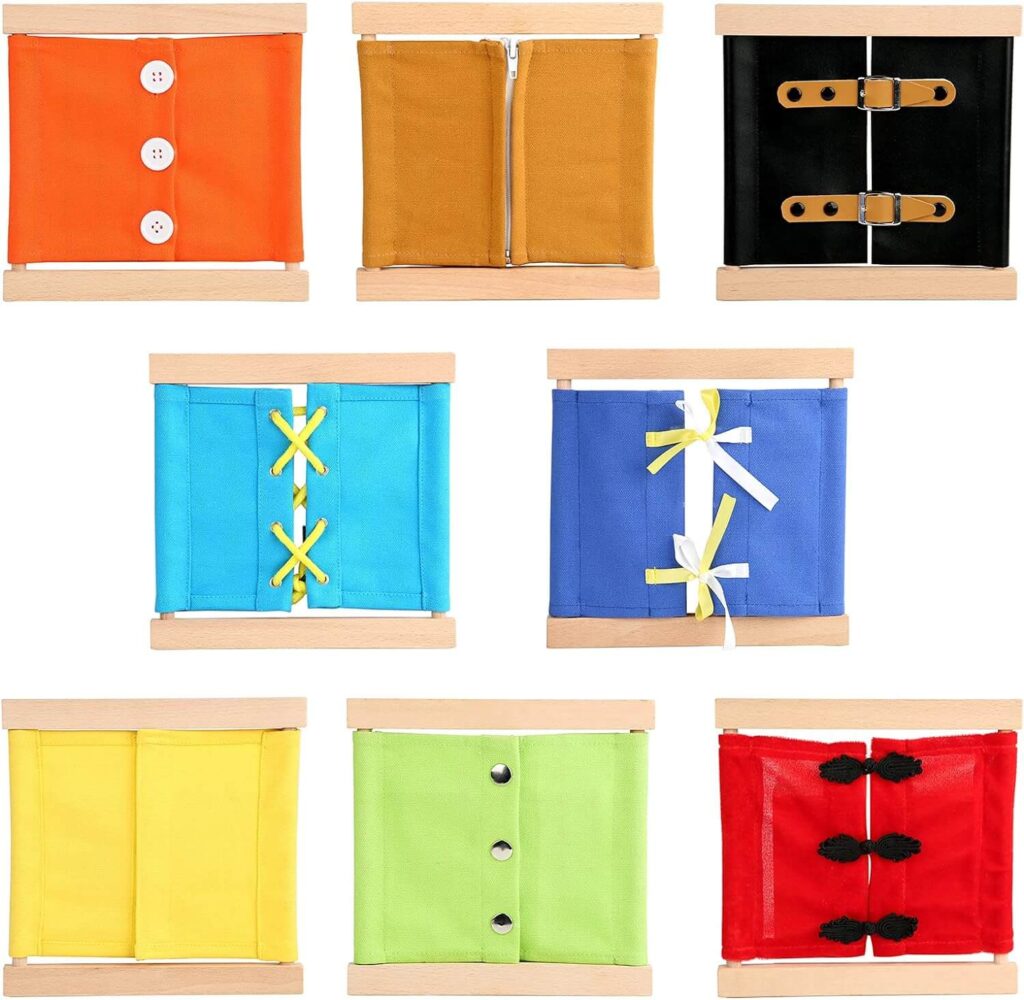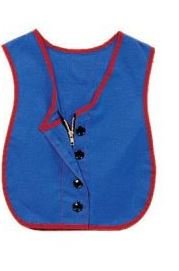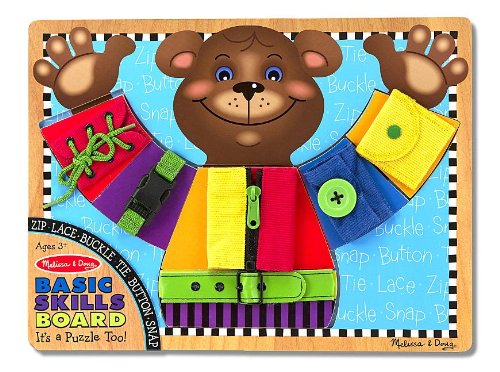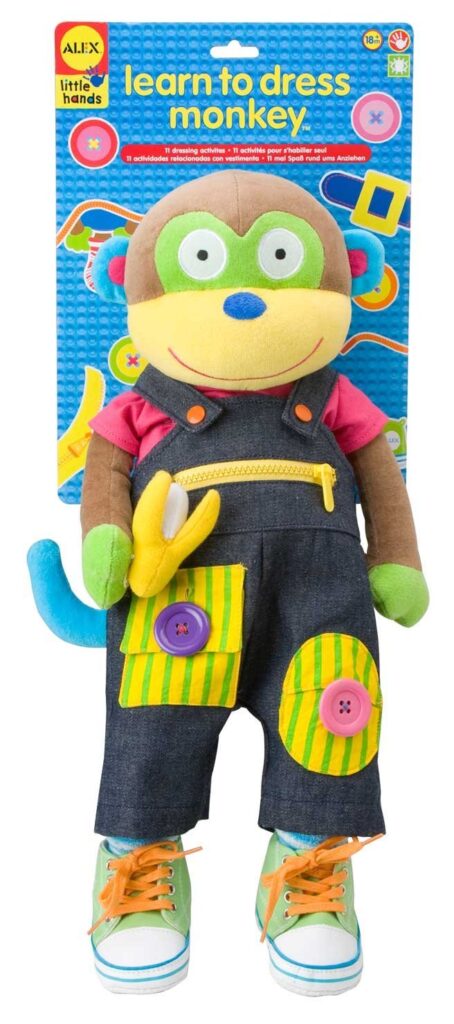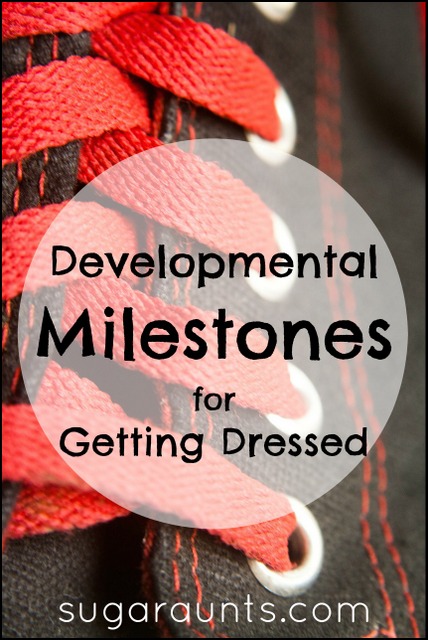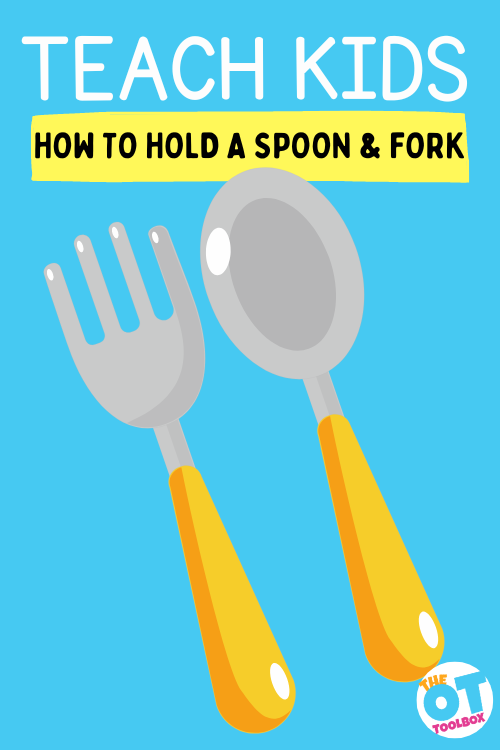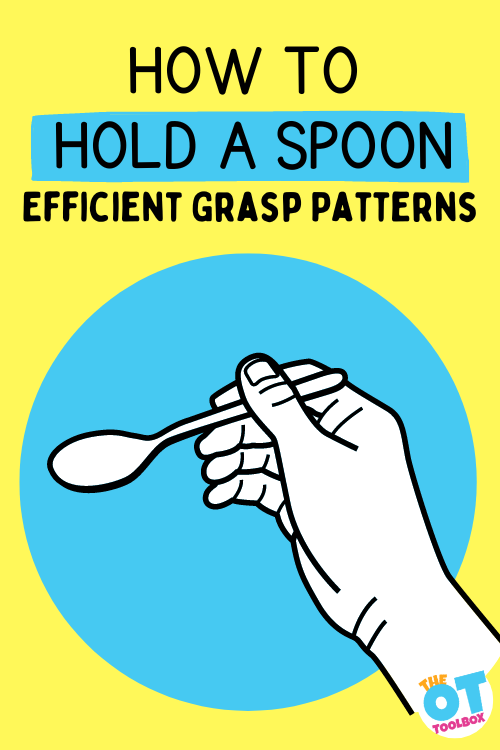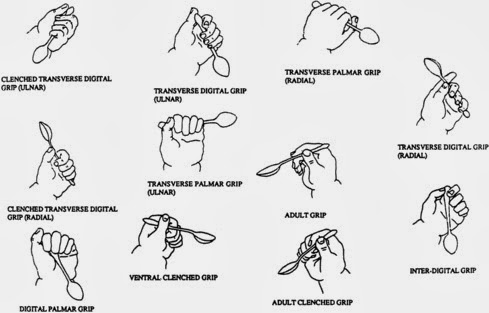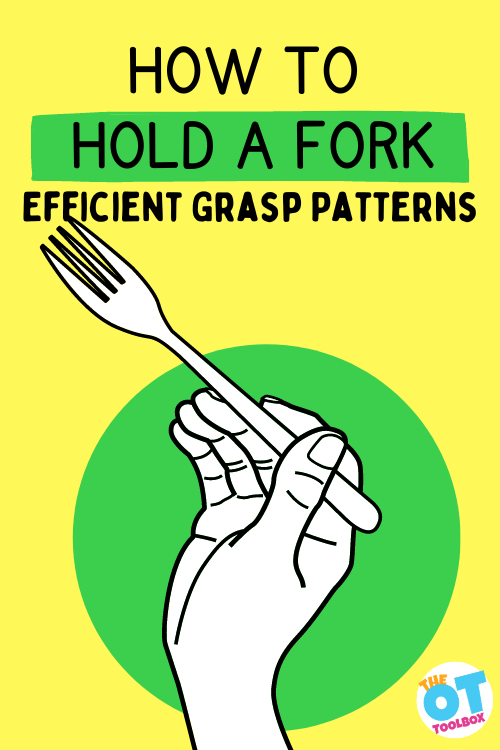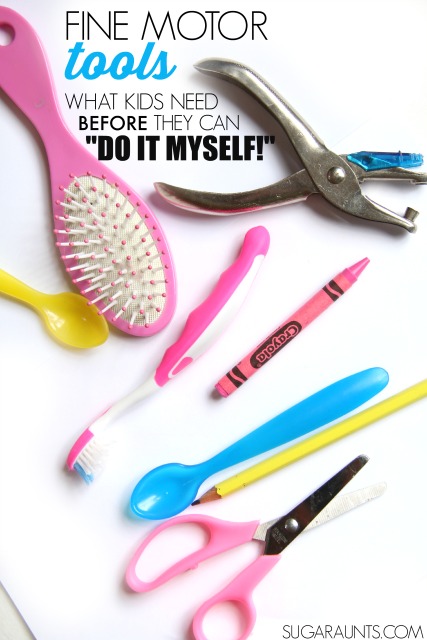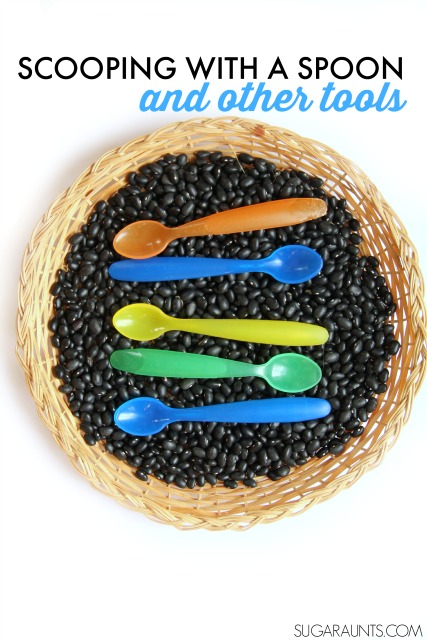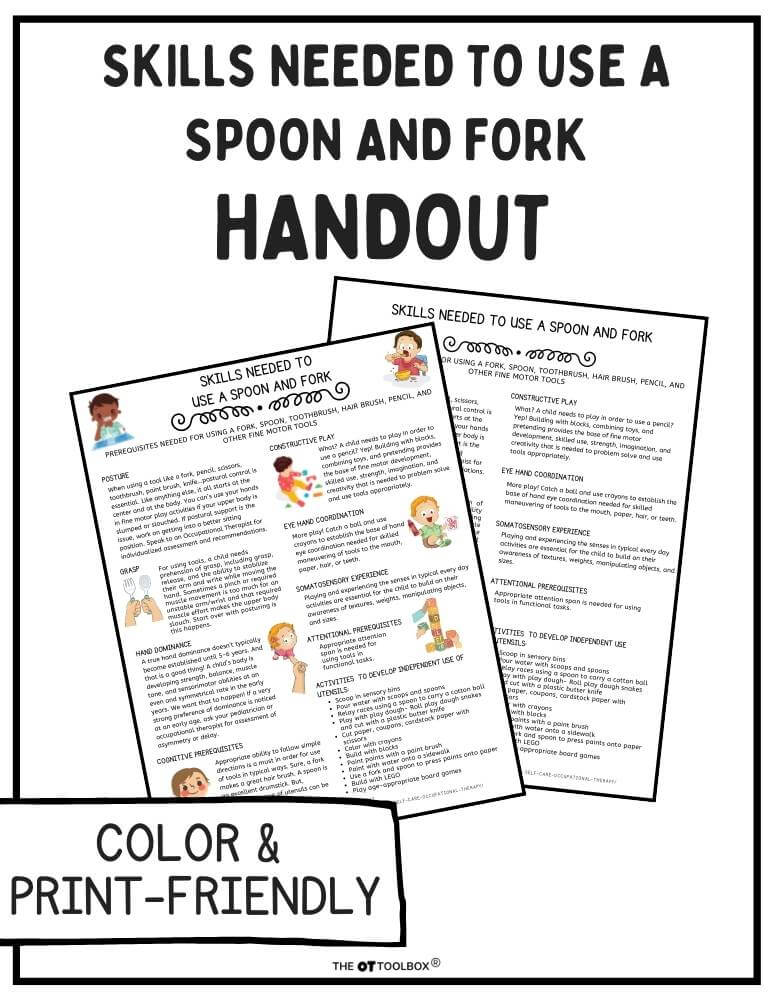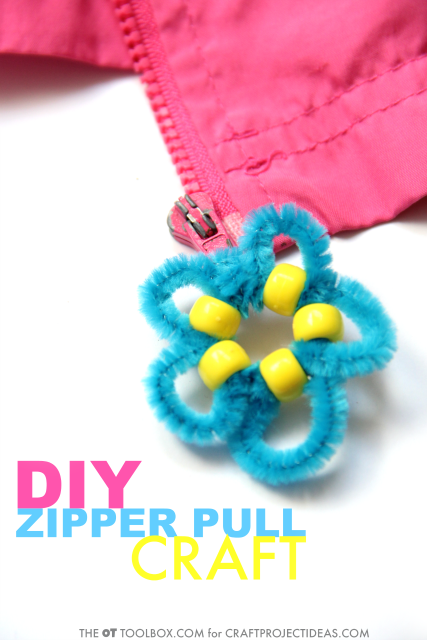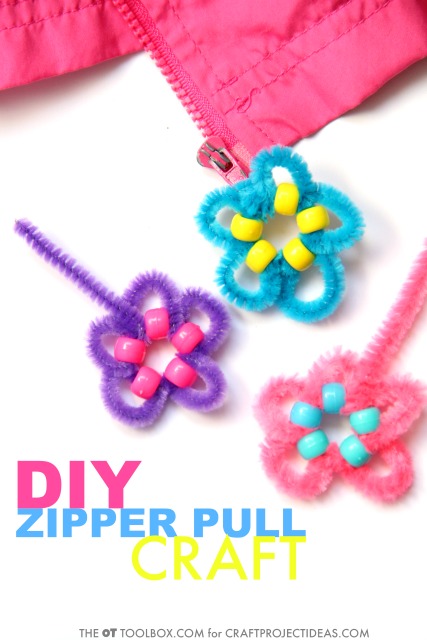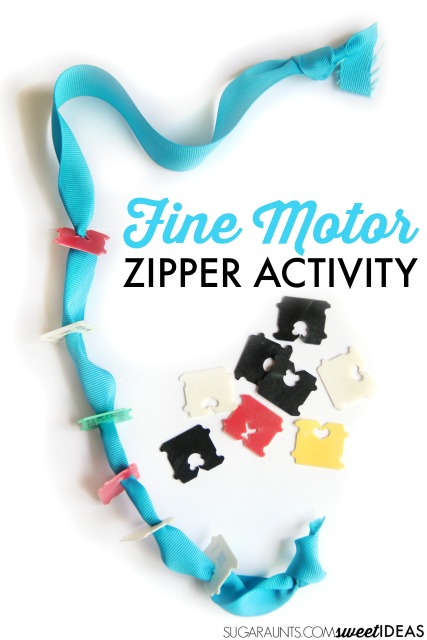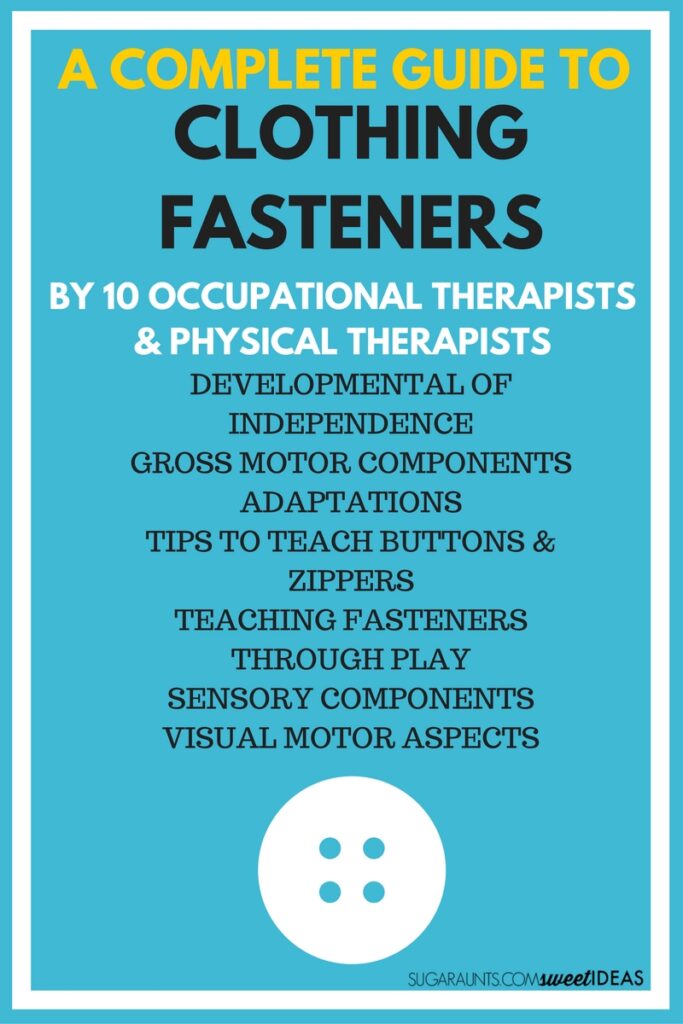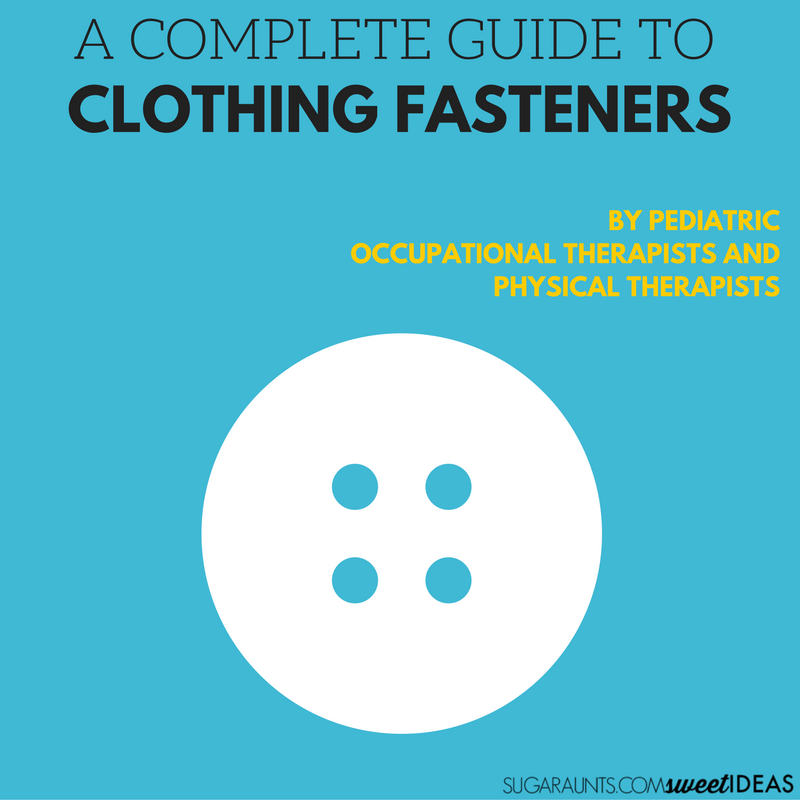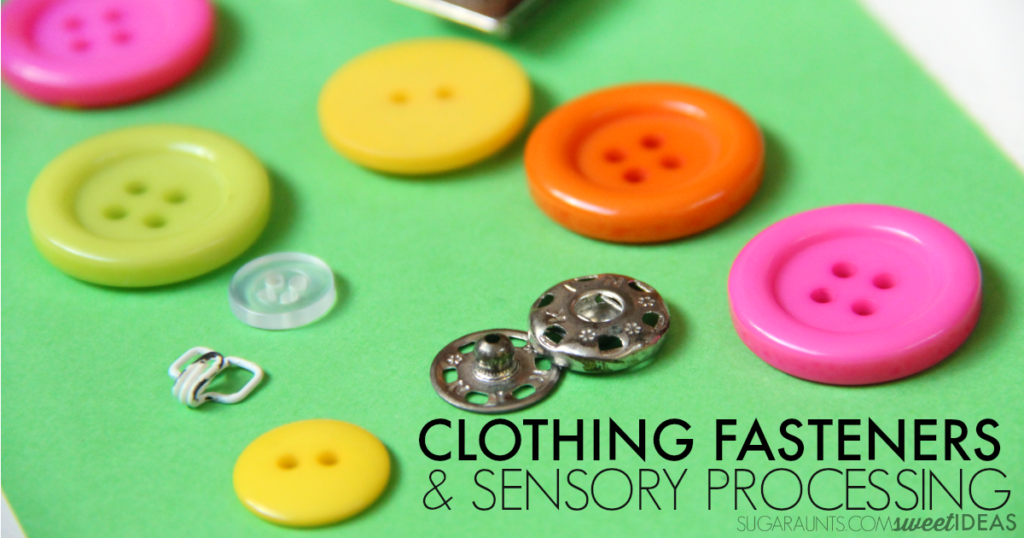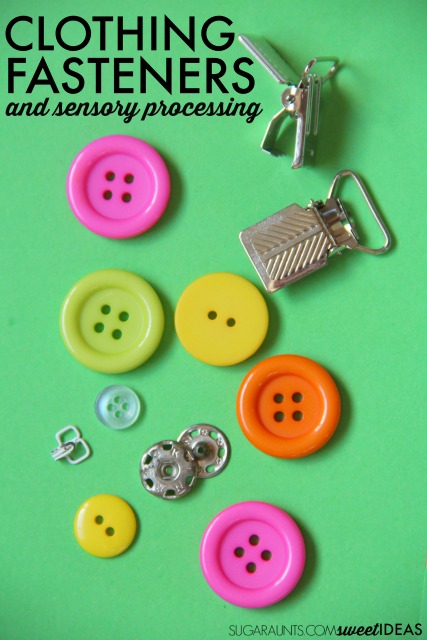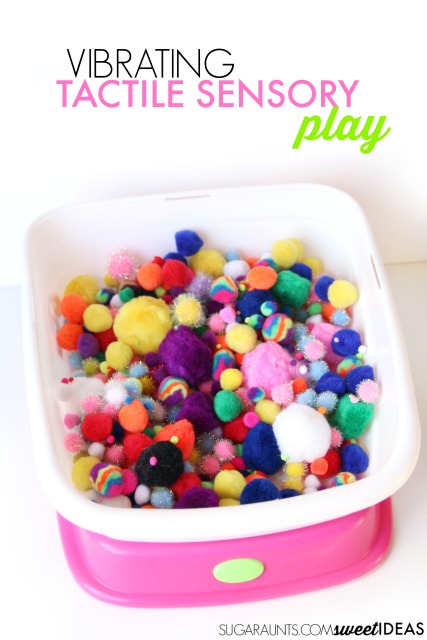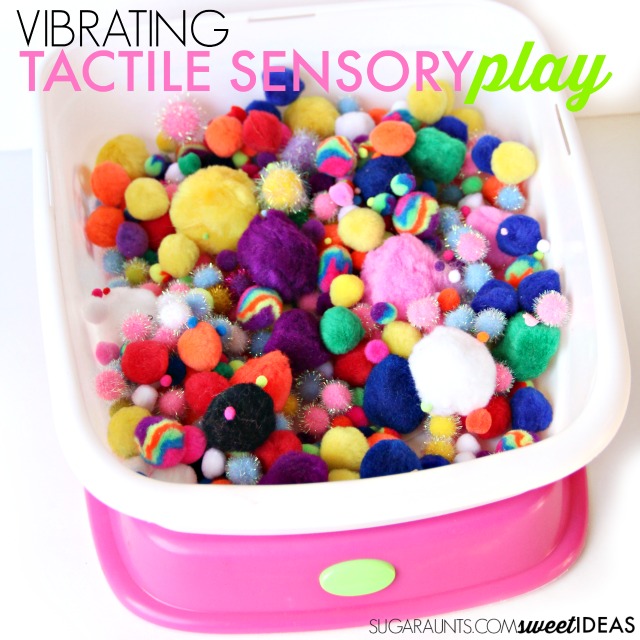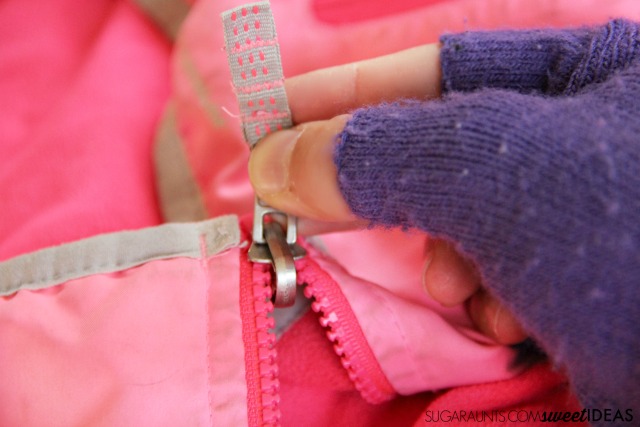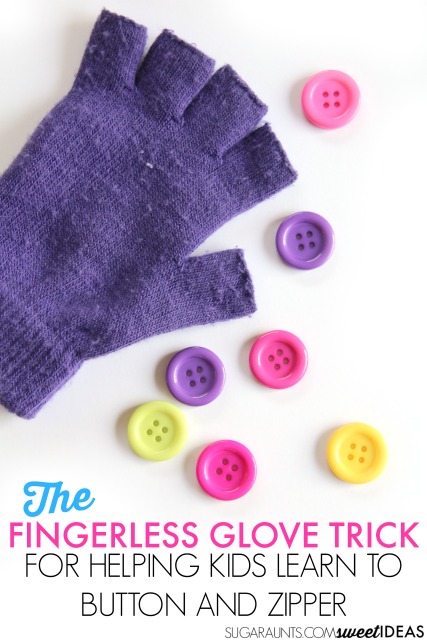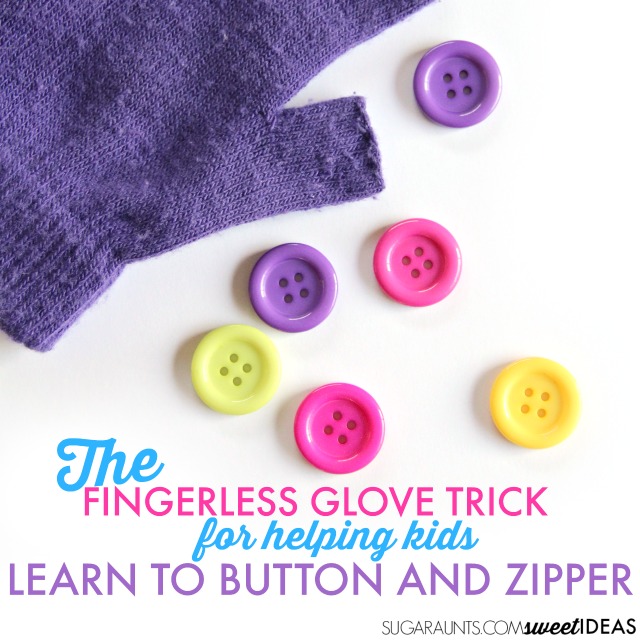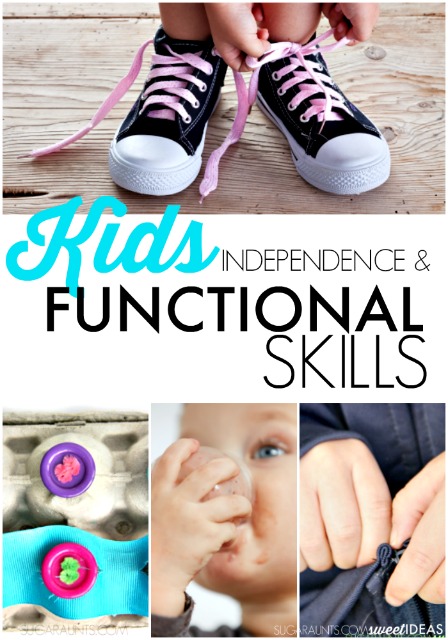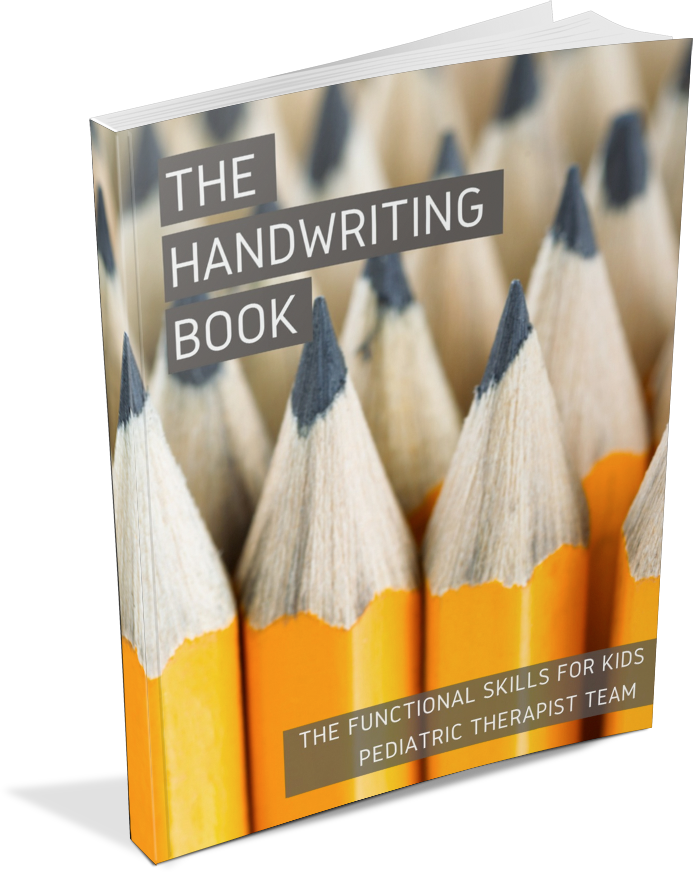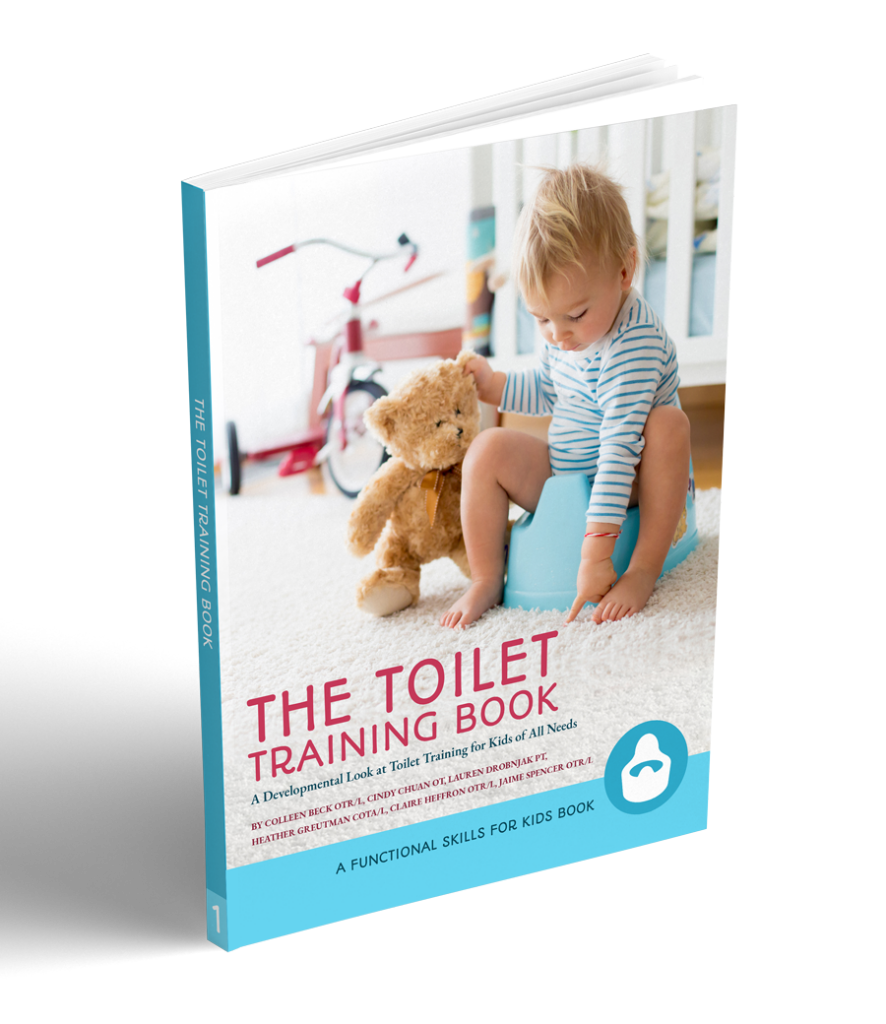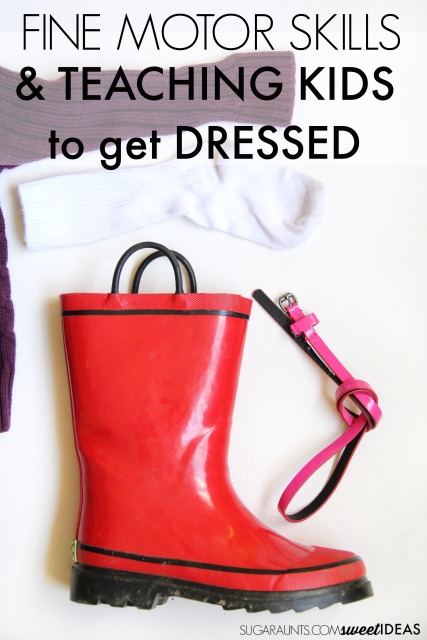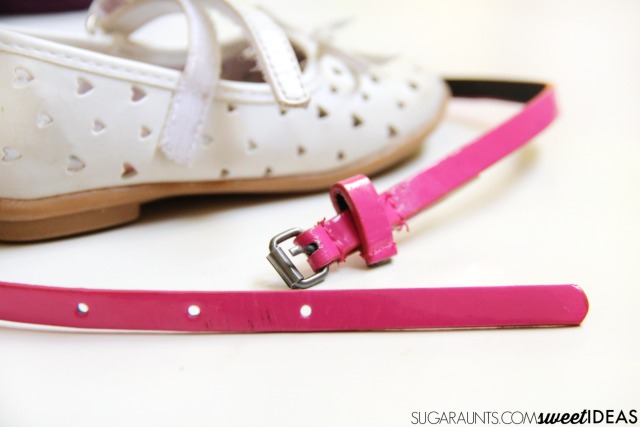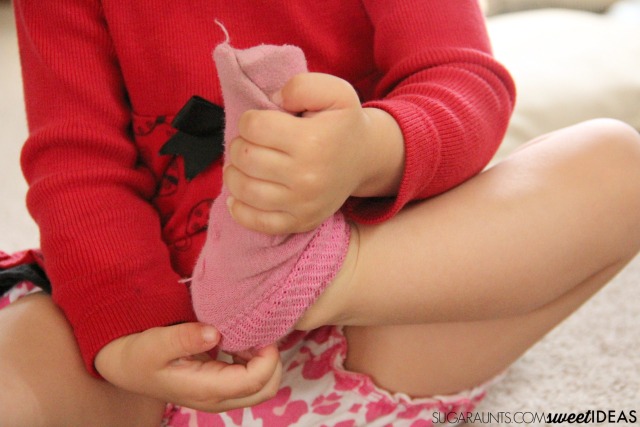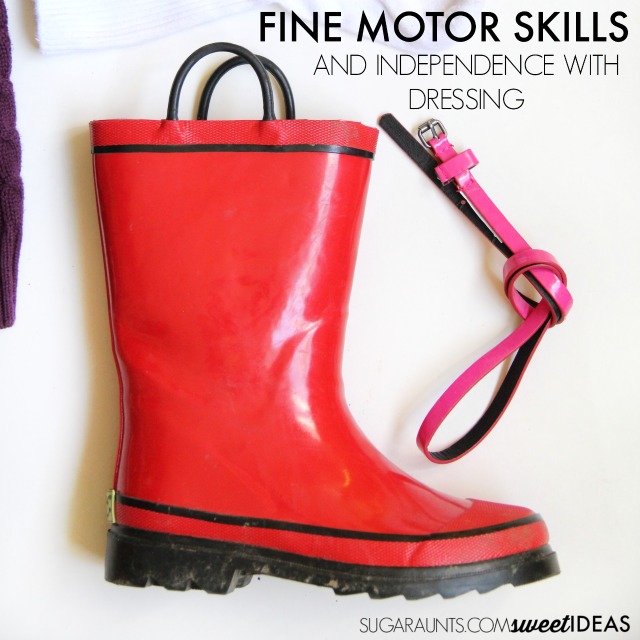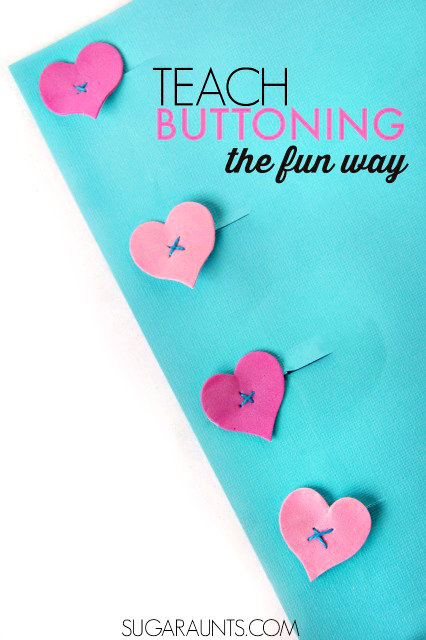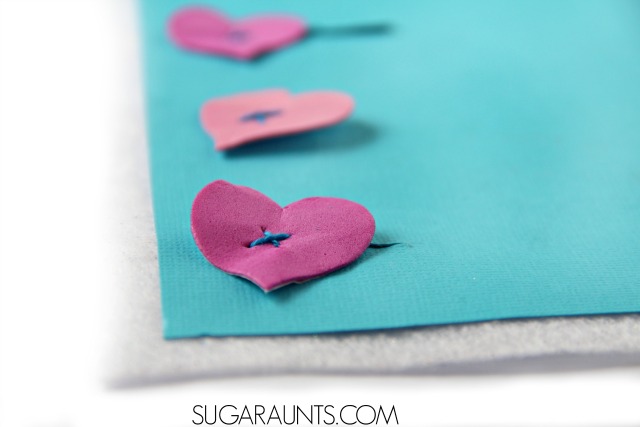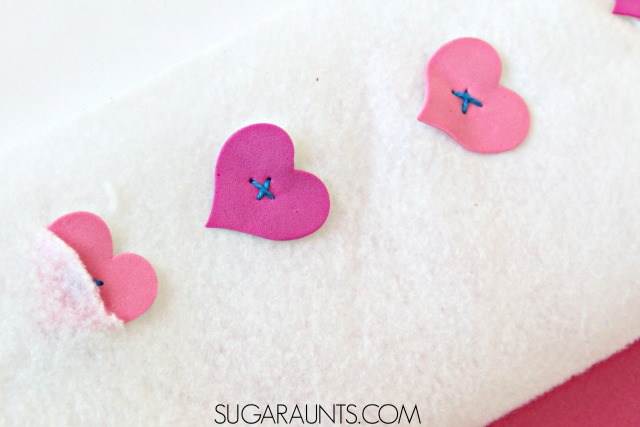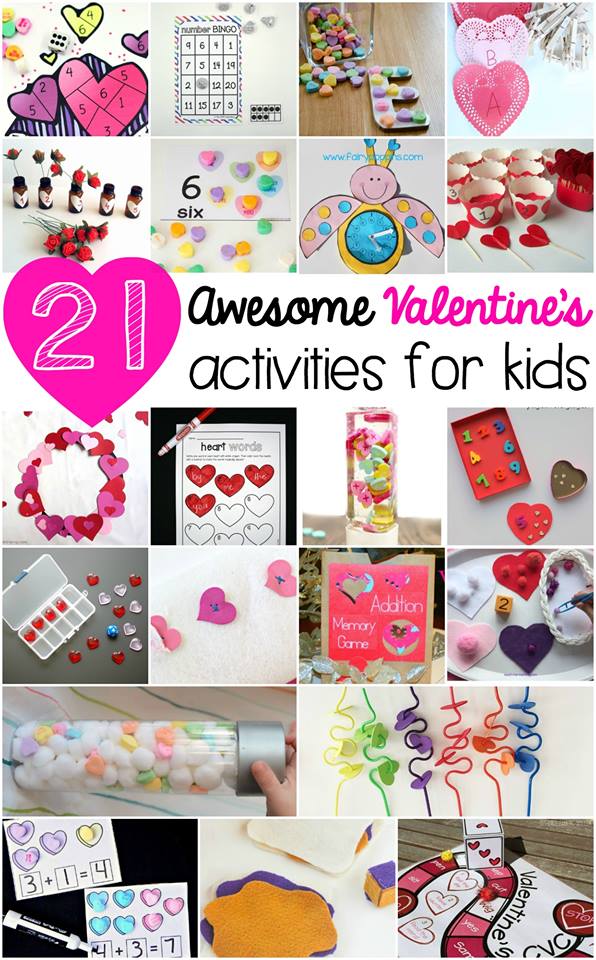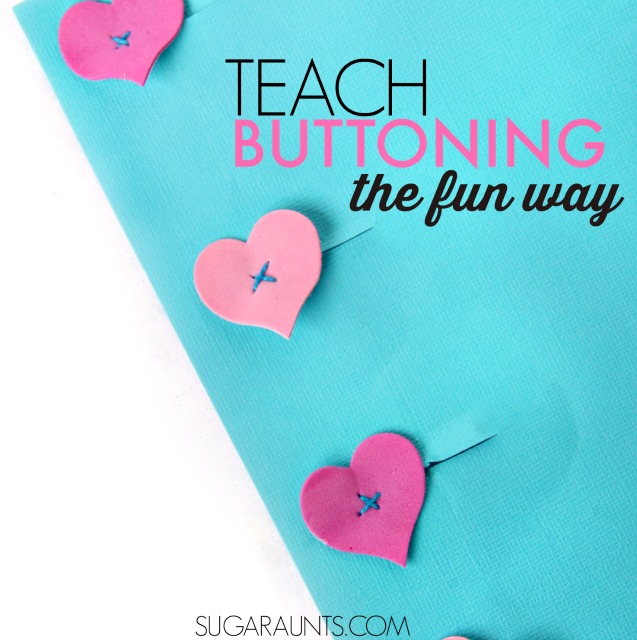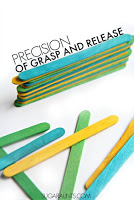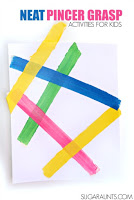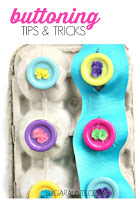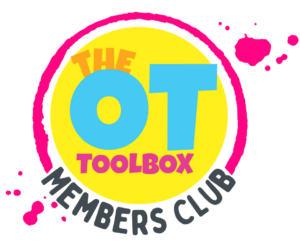This blog post on learn to dress toys, was originally written 11-10-2014 and was updated 12-4-2023.
Occupational therapy practitioners work with children on a variety of self-care tasks, one of them being teaching kids to dress themselves. Because of that, we often use learn to dress toys in building dressing skills like managing zippers, buttons, the sensory motor skills involved with clothing snaps, tying shoes, etc. In this blog post, you’ll find information on what age should a child dress themselves as well as toy recommendations to make the self-care task of children dressing themselves fun and engaging through dressing skills toys.
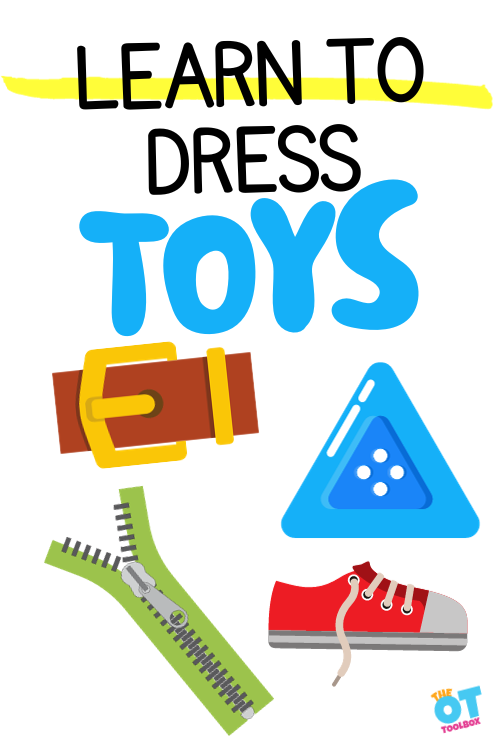
Learn to Dress Toys
Looking for toys to support kids in self-care, especially in independence with self-dressing skills? These occupational therapy toys are fun ways to build skills in self care!
Parents often question when should child dress themselves, and there is much to consider. We cover all of the fine motor skills needed for dressing skills in a different blog post, because there are many underlying skill components that are needed for getting dressed.
When it comes to learn to dress toys, we can foster the development of getting dressed skills in kids because the toys make working on these sensory motor skills more engaging and fun. When paired with a toy or dressing skills doll, the self-care task becomes part of the play, combining functional performance areas.
In order to play with the learn to dress doll, a child needs to manage the buttons, snaps, zippers, etc. And, if they are playing with a dressing toy that has small clothing, or other fasteners like clips or buckles to place the doll into a stroller, they are are strengthening fine motor skills.
The play easily meshes with the functional performance area of self-dressing because the same motor planning skills are used and can be transferred to self-dressing.
We’ll cover specific toy recommendations for teaching dressing skills below. First, let’s go over the dressing developmental milestones for each age range. It’s important to know these general dates and dressing milestones because the toy recommendations can follow these guidelines. Also, when parents ask about when should a child be able to dress themselves, this information can go hand-in-hand with toy ideas to support developmental milestone progression.
Dressing Developmental Milestones
Teaching children to get dressed on their own can be a tricky subject. Kids achieve many developmental milestones at different ages and teaching independence skills can be frustrating. The ability to dress oneself is a self-care task that is part of child development.
Teaching kids to get dressed depends on many small splinter skills that make up the end result of clothing on, fasteners done, and child ready to go for the day.
Learning to get dressed takes time and it depends on the development of fine motor skills, gross motor skills, visual-motor skills, and even self-confidence. Children may reach some milestones ahead of “schedule” and require more time or practice to reach others. It is important to remember that every child is different.
Childhood Milestones for Getting Dressed
Here, we are sharing some approximate self-care milestones in dressing for kids and toys that can help with this skill. Remember that every child is different and the age ranges listed below are approximate.
This list of dressing milestones for each age is progressive, meaning that the list includes the milestones attained previously. Skills will progress as sensory and motor skills are accomplished. Previously achieved milestones may become easier, more fluent, and automatic as the child develops.
Dressing Skills for a One year old:
- Takes off socks
- Helps with pushing arms through sleeves
Dressing skills at Eighteen months:
- Removes shoes
Dressing skills for Two years old:
- Helps with pushing down pants
- Helps with pulling on socks
- Pushes arms through sleeves once shirt is over head
- Removes hats
- Assists with pants by pushing legs into pants
- Unbuttons large buttons
Dressing skills for Two-and-a-half years old:
- Attempts buttons
- Able to pull on an open front shirt or jacket with assistance
- Removes open front shirt/coat (without fasteners)
Dressing skills for Three years old:
- Puts socks and shoes on
- Able to pull on a shirt correctly
- Able to put on shoes (may be wrong feet)
- Able to put on socks (may be incorrectly oriented)
- Able to pull up a zipper if engaged
- Able to button large buttons
Dressing skills for Three-and-a-half years old:
- Able to unzip a jacket
- Able to unbuckle a buckle- Buckle toys are great for this skill!
- Able to pull shirt on and orient clothing (front to back correctly)
- Takes off shirt and pants
Dressing skills for Four years old:
- Buttons coat or shirt
- Able to put socks on with correct orientation
- Able to initiate zipper by inserting one side into the zipper carriage
Dressing skills for Five years old:
- Put shoes on correct feet
- Dresses independently
Dressing skills for Six years old
- Zips/unzips independently
- Ties shoes
Dressing skills for Seven years old and older:
- Chooses clothing appropriate to the weather
Each of the dressing skills noted above can be generalized, according the the needs of the individual. For example, children from various cultures or environments may have different types of clothing or clothing fasteners that are required at various ages. These differences may mean more or less exposure to different dressing skills.
Toys to help kids learn to get dressed
Now that we’ve covered dressing milestones and ages, let’s go over some toy suggestions for dressing skills.
The learning to dress toys include a variety of options:
- Learn to dress dolls
- Zip, button, buckle, tie dolls and toys
- Dressing boards
- Dress up puzzles
- Clothing fastener supports
- Dressing lap pads
- Getting dressed supports like fun visual tools
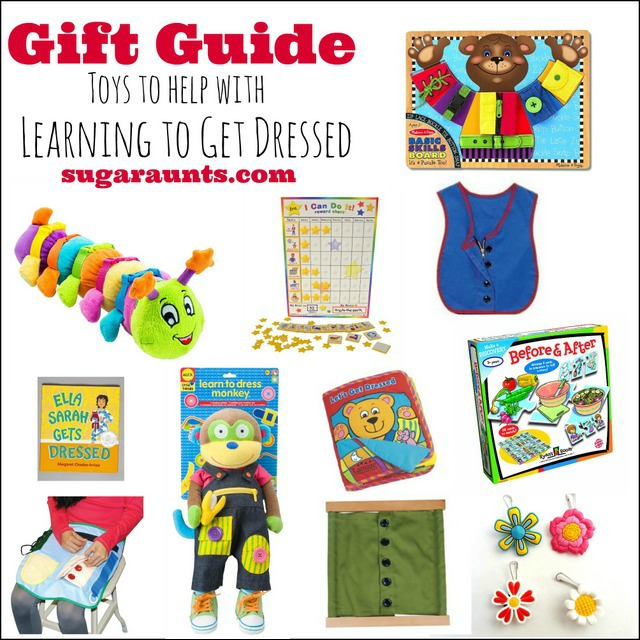
When a child needs to work on some skills for their independence, toys can be the way to go! These toys are great for developing independence in dressing skills. This post contains affiliate links.
Sequencing Toys for Dressing Skills
Picture sequencing puzzles like this What Happens Next puzzle (affiliate link) is great for kids who need to gain insight into concepts of before and after. You can not put your shoes on before you put your socks on. Cognitive concepts can be tricky for children to understand if auditory processing of these ideas are difficult.
These picture puzzle pieces are not all about dressing skills, but the first, second, last sequence and order words are a helpful first step for children learning to get dressed on their own.
Books about learning to get dressed
These learn to get dressed books support skills like why wearing appropriate clothing for the weather is important. They can be a great way to incorporate discussions of interoception into the task of self-dressing skills.
Oliver West Gets Dressed (affiliate link) is a fun book for the smallest children. This book will introduce terms and language needed for independence in getting dresses.
“Ella Sarah Gets Dressed” (affiliate link) is a fun book to read for getting dressed ideas.
These toys to work on clothing fasteners are dressing boards. They can be incorporated into play by using in different positions, in sensory play, and in obstacle courses.
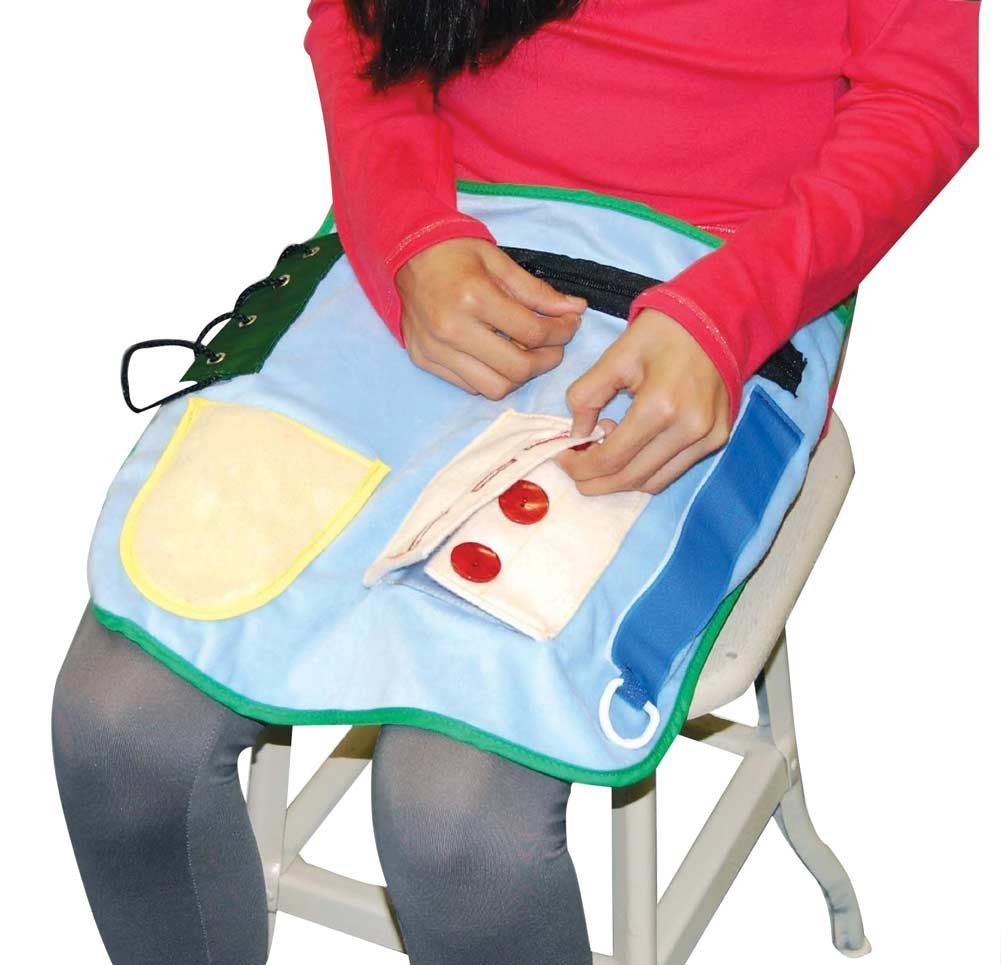
Working on buttons, snaps, and other fasteners is great for practicing on boards, books, and dolls. However, it is often difficult for children to relate the skills they learn on these tools to real clothing that is ON their bodies.
Manipulating clothing and fasteners is actually OPPOSITE movement patterns when fastening these same fasteners on the body verses on a board or doll that the child is looking at.
This Special Needs Sensory Activity Apron (Children & Adult Sizes)(affiliate link) solves that issue as the child can manage the clothing fasteners right on their lap. This is so great for children with motor planning difficulties.
You could also use a Montessori Buttoning Frame with Large Buttons Dressing Frame (affiliate link) and lay it right on the child’s lap.
Children’s Factory Manual Dexterity Vests – Button-Zipper Combo Vest (affiliate link) is a good way to practice buttons and zippers right on the child.
Other dressing board toys include (affiliate links):
- The Original Dressing Board– includes buttons, snaps, buckles, zippers, and other clothing fasteners.
- Fine Motor Fidget and Dressing Skills Board– has many pages of activities. This looks like so much fun!
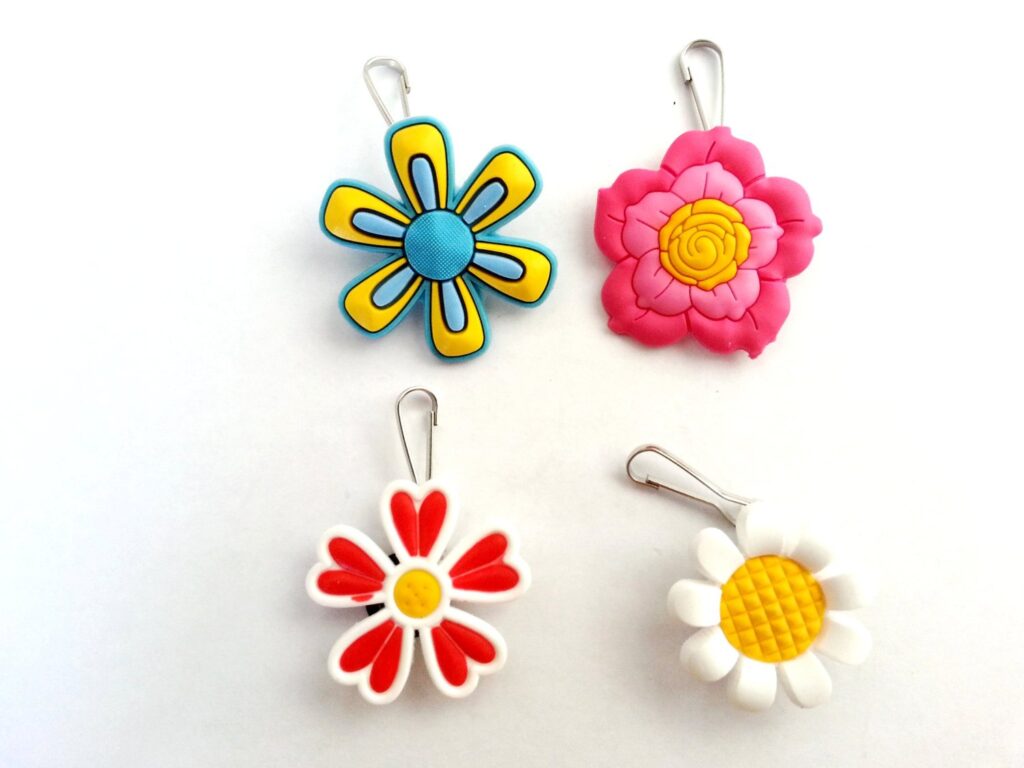
Sometimes managing a zipper can be difficult because grasping the zipper is ineffective or clumsy. A large zipper pull can make managing the zipper on clothing or a backpack much easier.
These 4 pcs Large Flowers Zipper Pull / Zip pull Charms for Jacket Backpack Bag Pendant (affiliate link) are great for flower lovers, or maybe your child would rather have cool princess zipper pulls (affiliate link). You could also incorporate crafting and make your own DIY zipper pull fidget using a pipe cleaner and beads.
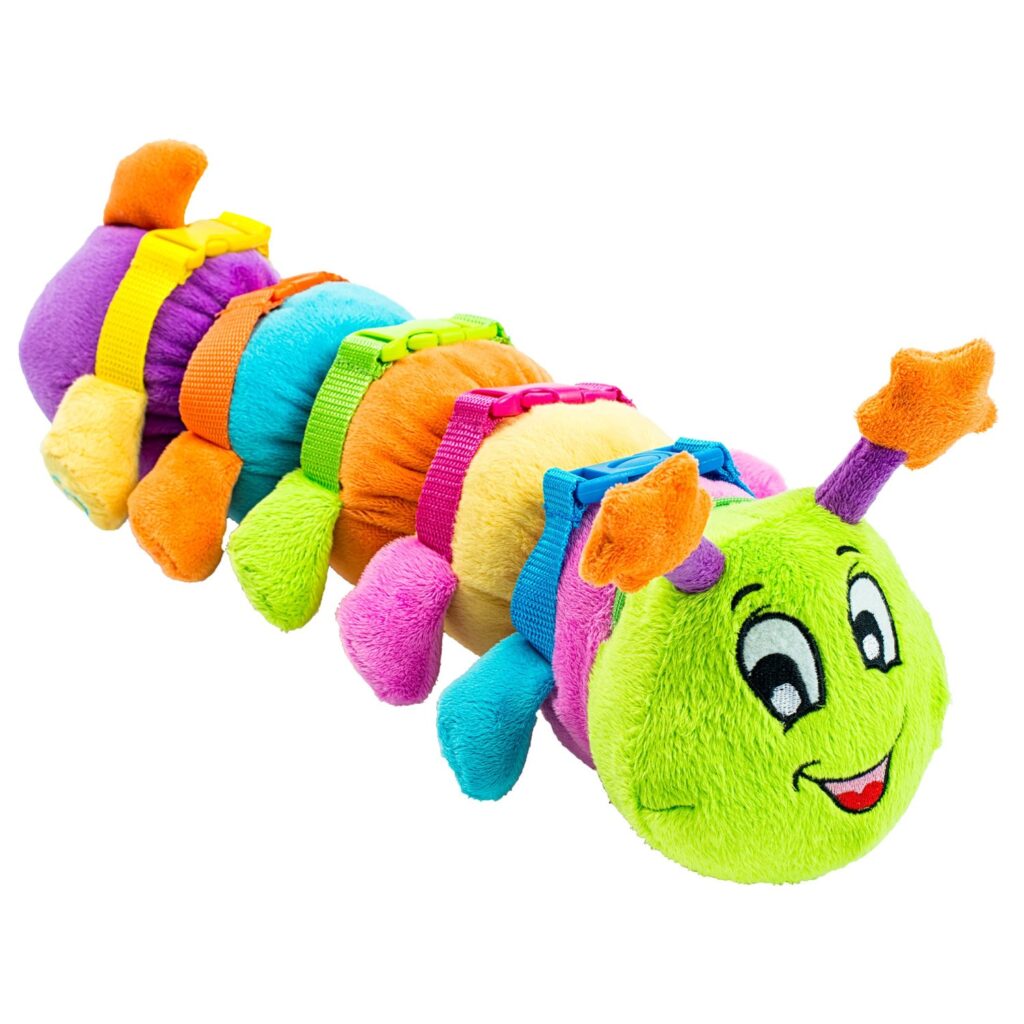
More fine motor practice can be done with the Buckle Toy “Bentley” Caterpillar (affiliate link). I actually love this for the Toddler age set who LOVE to buckle car seats, high chairs, and all things buckles. This cute little caterpillar also works on numbers for pre-math learning, too. Here are more of our favorite buckle toys for therapy.
Practice basic clothing fastener skills like buttons, zippers, snaps, and ties with the Melissa & Doug Basic Skills Board(affiliate link). The bright colors are fun and will get little fingers moving on clothing fasteners.
Learn to Dress Dolls
The nice thing about using learn to dress dolls is that they are a part of play and make the skill-building fun. However, just because the phrase “learn to dress doll” has the word “doll” in it, doesn’t mean that you can only find dolls that offer these sensory motor skills. There are learn to dress figures and toys like monkeys and other fun figures.
Learning to Get Dressed Monkey (affiliate link) is a fun toy for clothing fasteners.
Here are other fun learn to dress doll options (affiliate links)
- June Learn to Dress Doll
- Buckle Penguin– This toy helps with learning to manage buckles
- Learn to Dress Owls– These owl stuffed animals are great for kids that don’t want to play with dolls.
Dress Up Puzzles
There are dress up puzzles and mix and match dressing toys that help younger children to play with and explore different clothing options. This is nice for those struggling with clothing options based on weather or activity.
Some of our favorite dress up puzzles include:
- Mix and Match Bear Family Puzzle
- Melissa and Doug Dress Up Wooden Doll
- Peppa Pig Magnetic Dress Up Toy
Responsibility Chart for Getting Dressed:
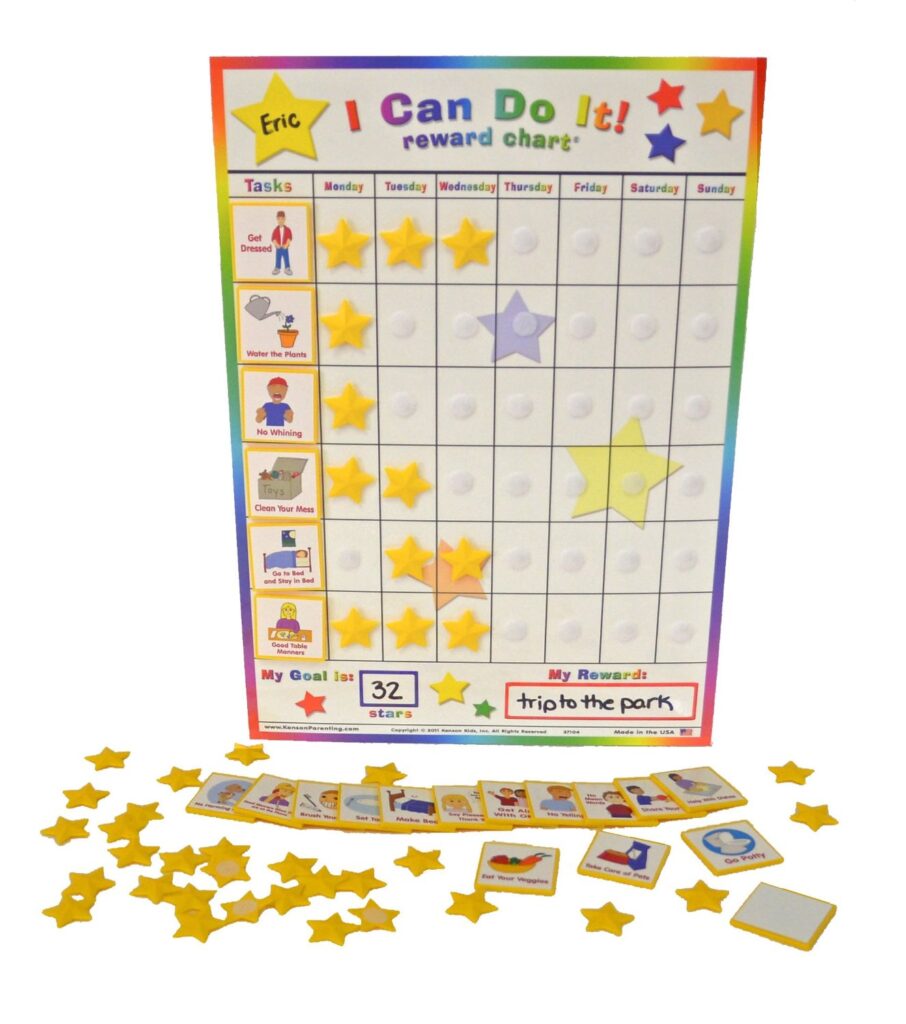
I Can Do It! Reward and Responsibility Chart (affiliate link) is a great idea for kids that need a little motivation to be independent. Making the morning routine smoother can make a big difference in independence. Older kids may benefit from this chart for self-confidence or working on responsibilities.
Shoe Tying Gifts
There are many shoe tying toys out there…
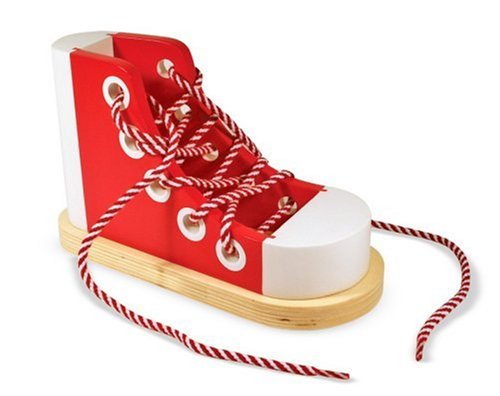
Melissa & Doug Deluxe Wood Lacing Sneaker (affiliate link) is a fun toy for shoe tying practice. The big, chunky shoe makes it fun. Sometimes different colored shoe laces help when a child is learning to tie shoes. I love these Easy Tie Shoelaces (affiliate link) that come in two different colors.
Other toys that build skills…
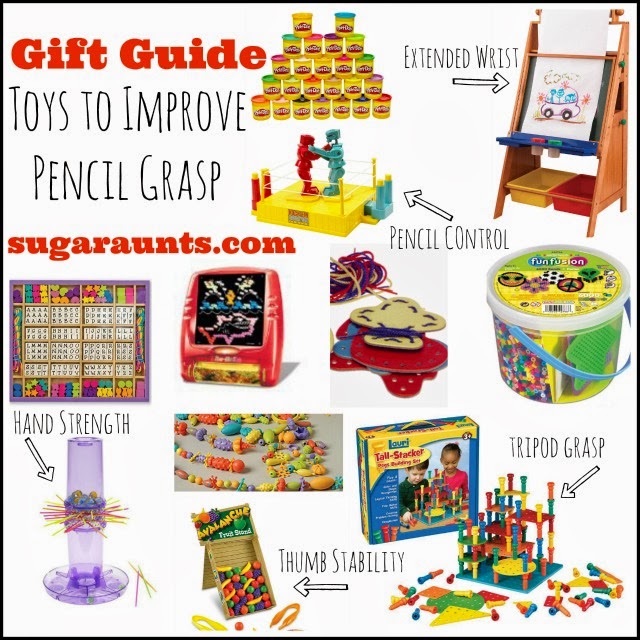
Gift Guide: Toys to Promote Improved Pencil grasp
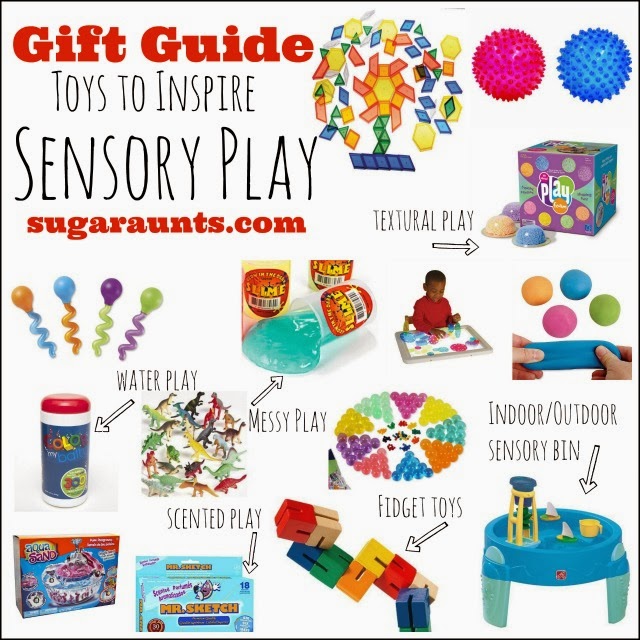
Gift Guide: Toys for Sensory Play
Do you have any favorite learn to dress toys, dressing boards, or dress up dolls?

Colleen Beck, OTR/L has been an occupational therapist since 2000, working in school-based, hand therapy, outpatient peds, EI, and SNF. Colleen created The OT Toolbox to inspire therapists, teachers, and parents with easy and fun tools to help children thrive. Read her story about going from an OT making $3/hour (after paying for kids’ childcare) to a full-time OT resource creator for millions of readers. Want to collaborate? Send an email to contact@theottoolbox.com.

